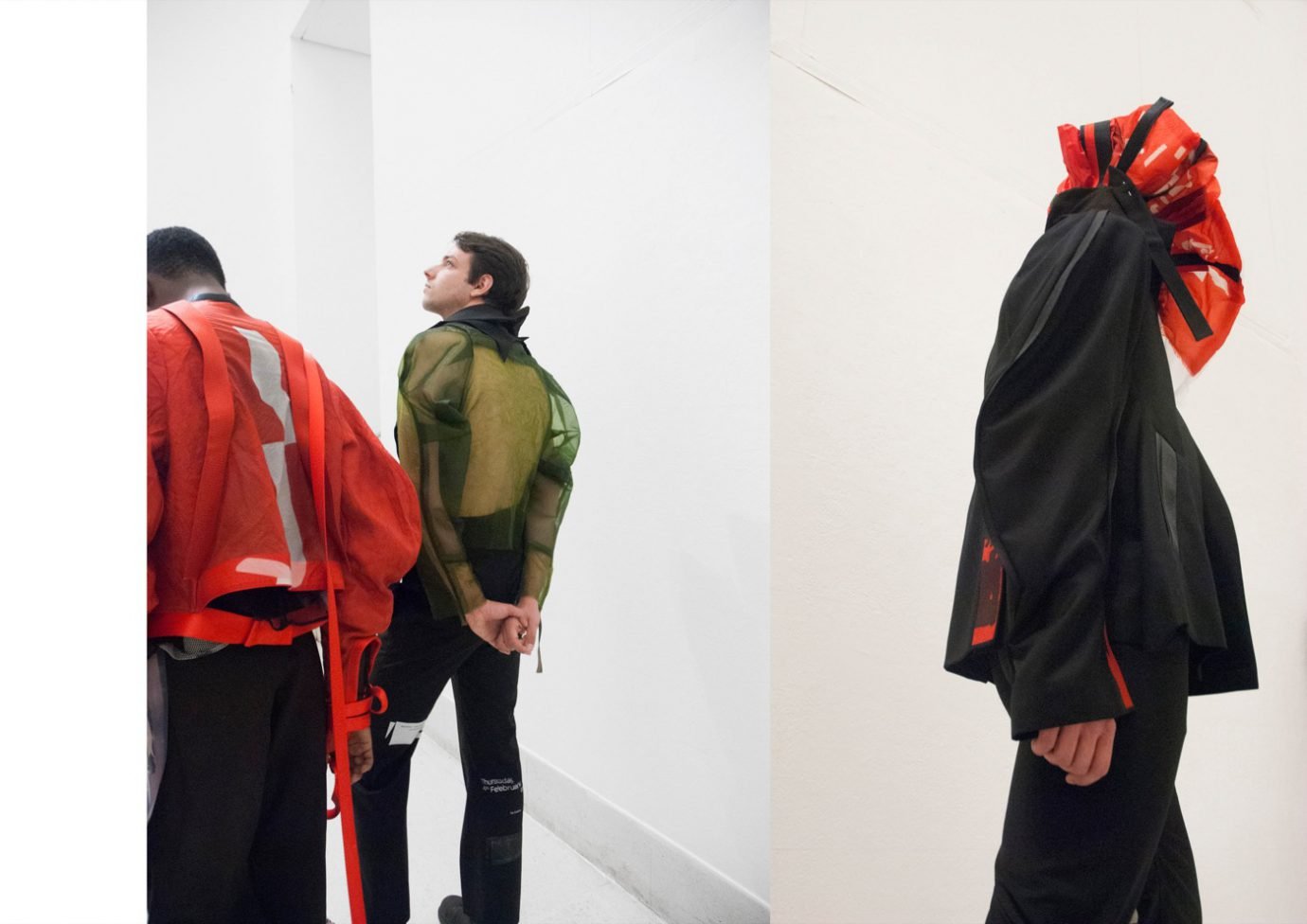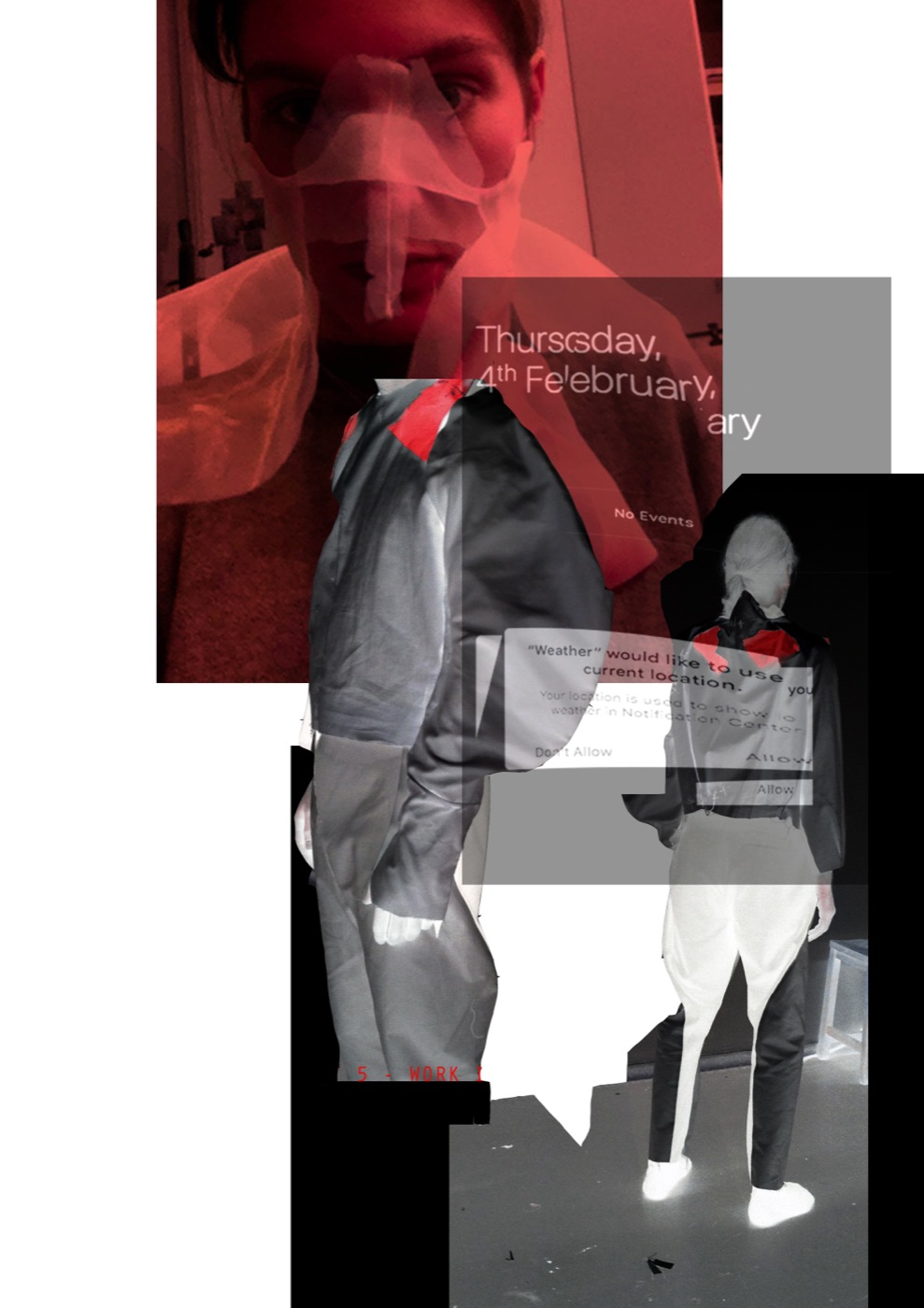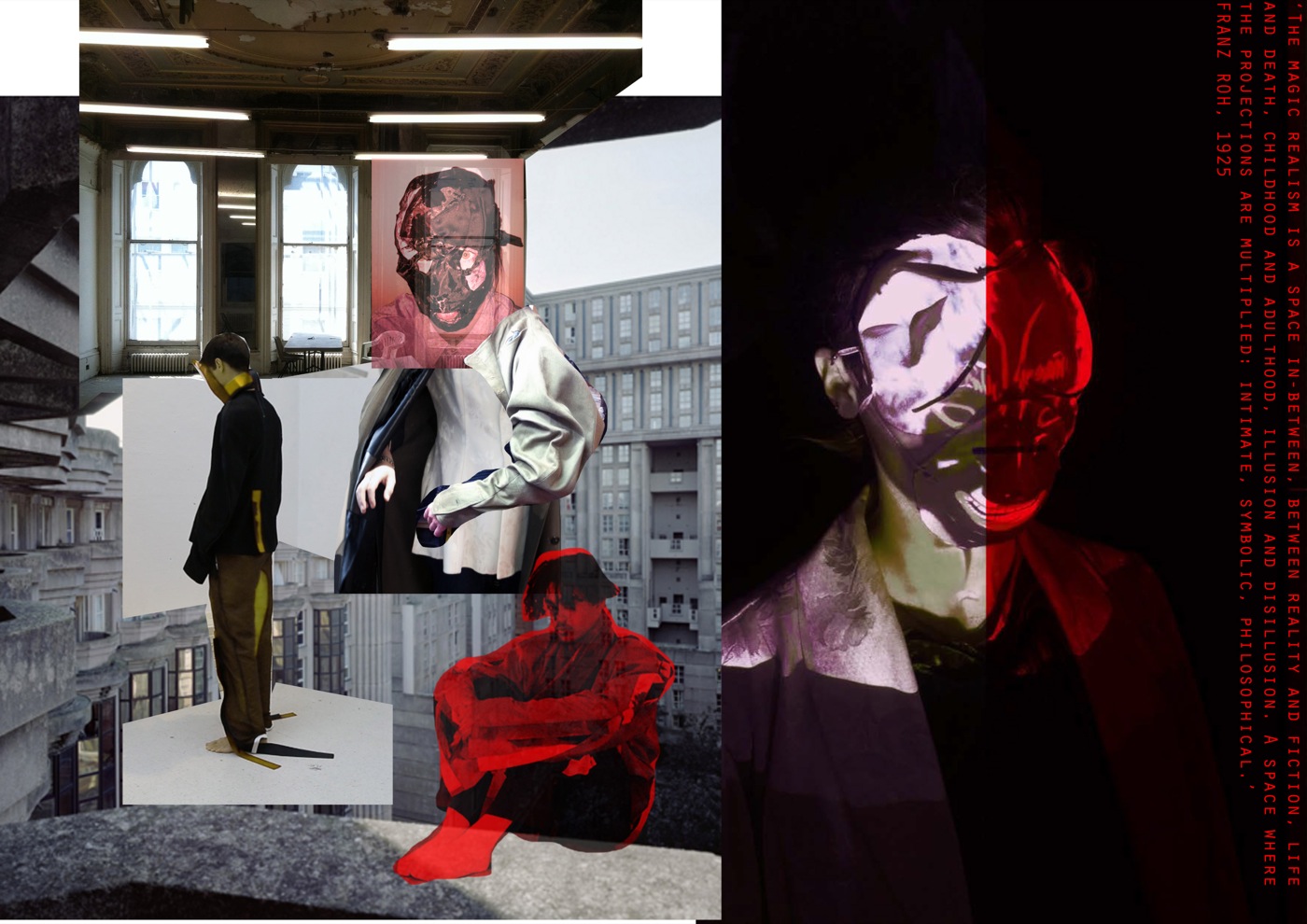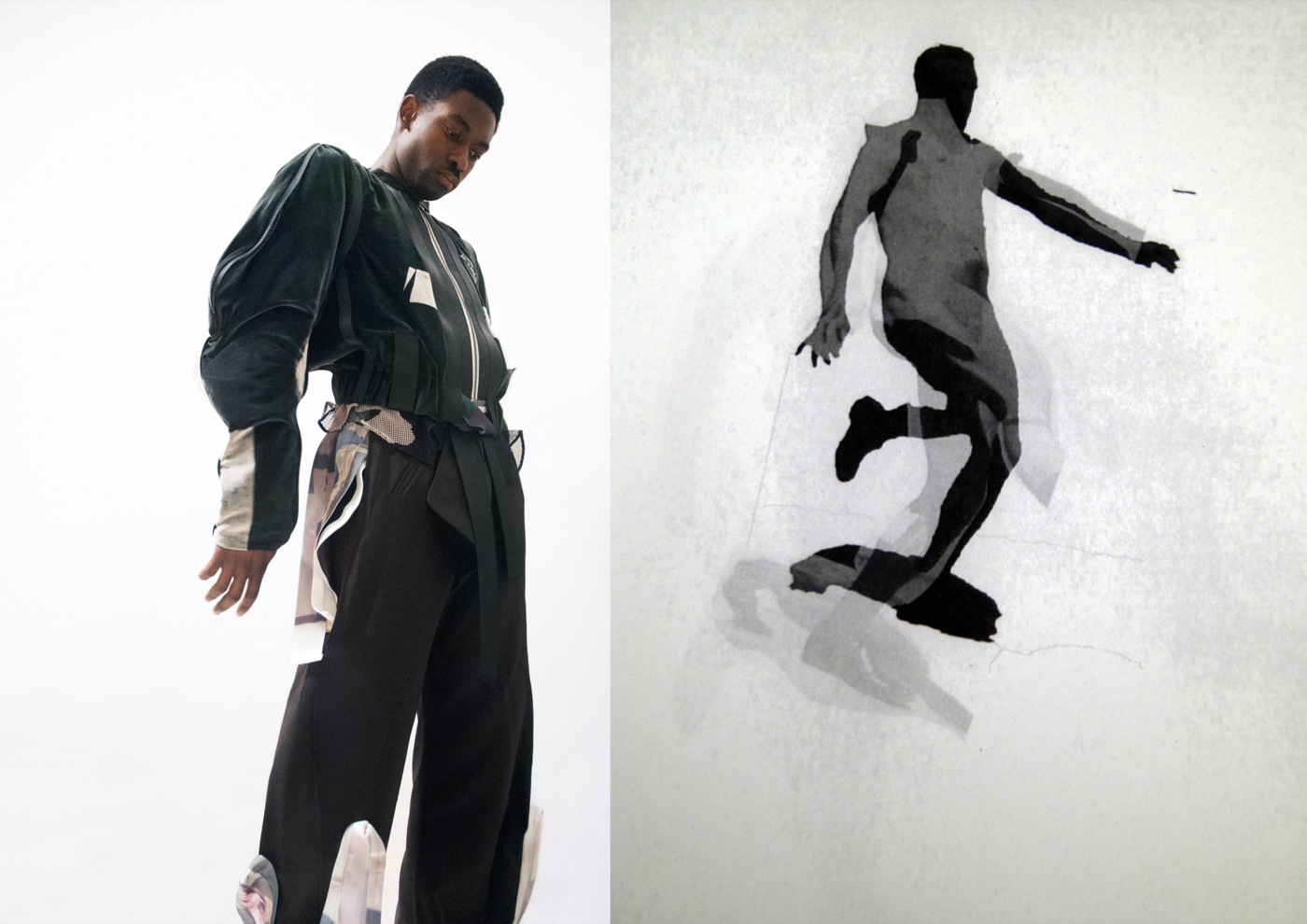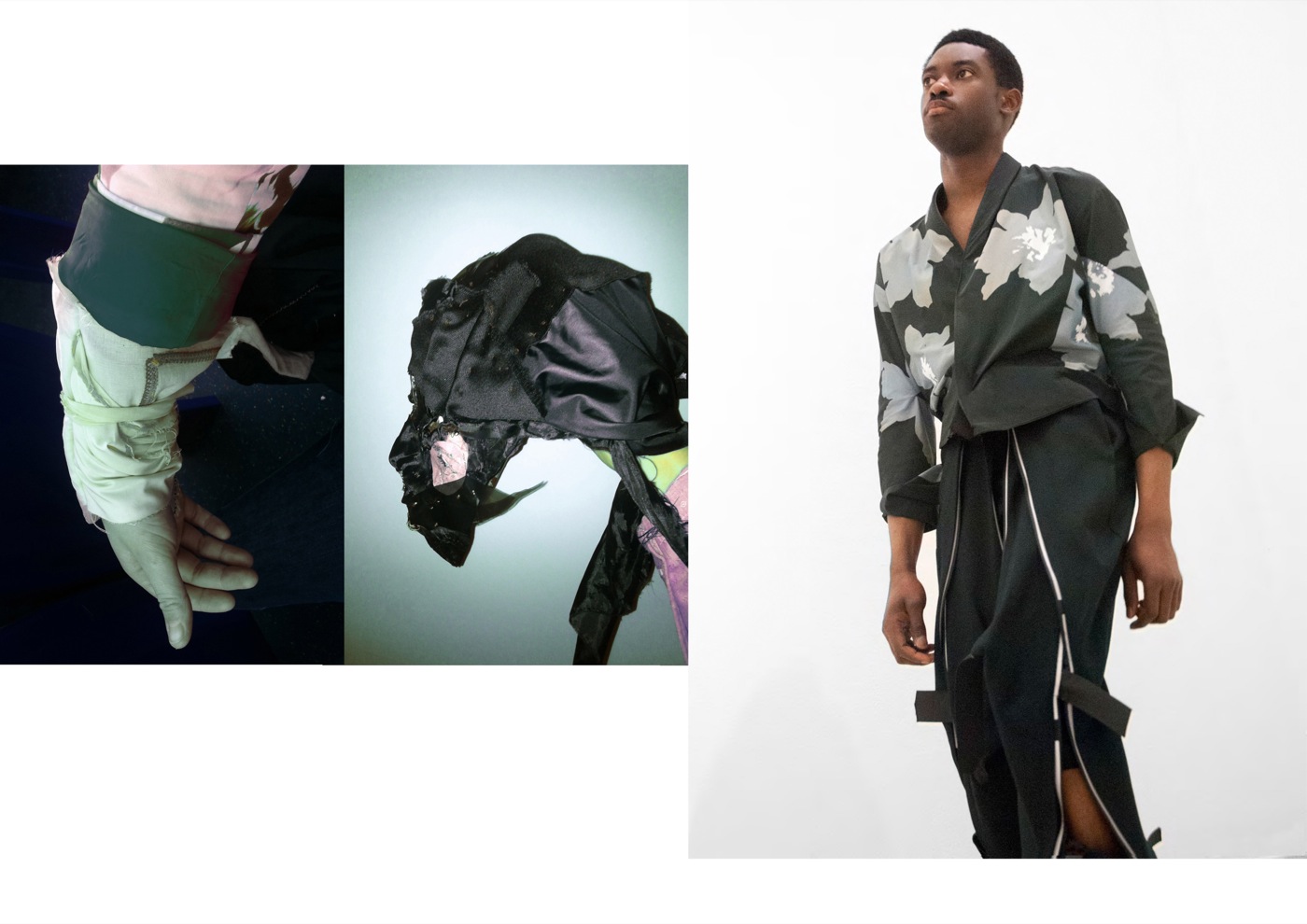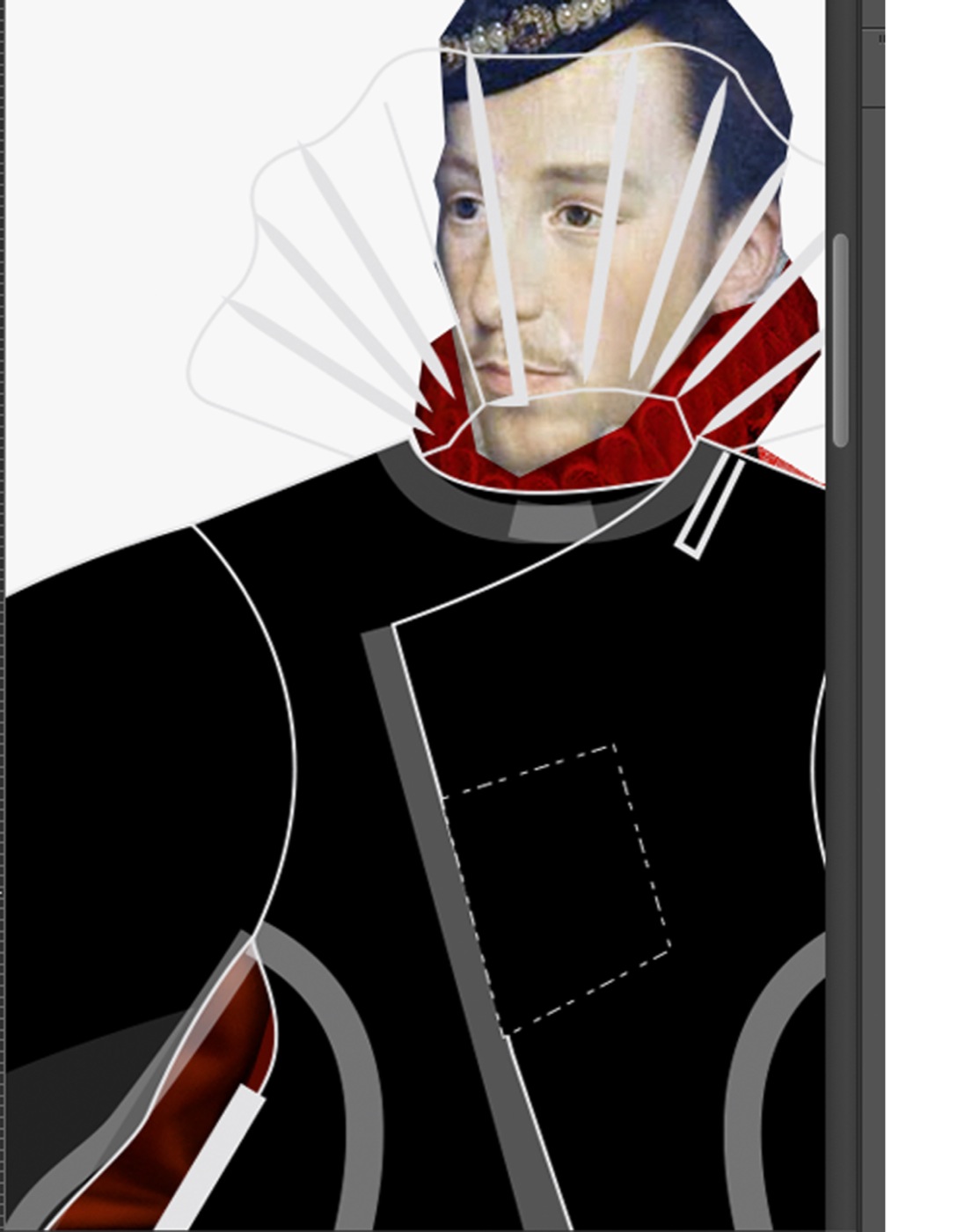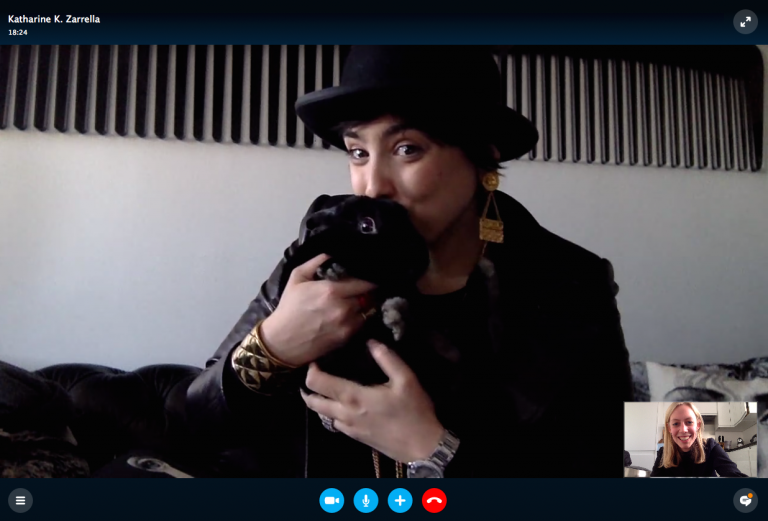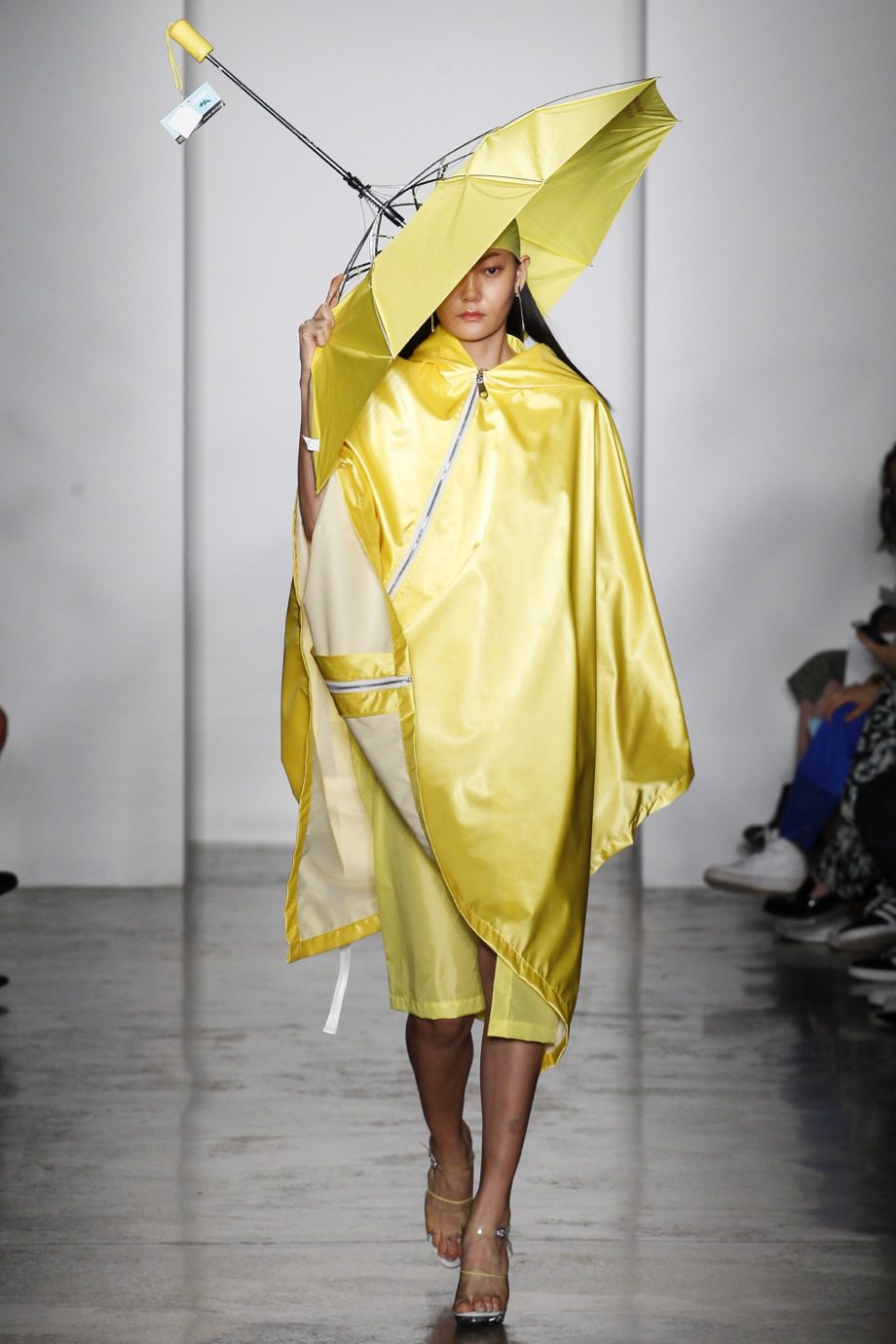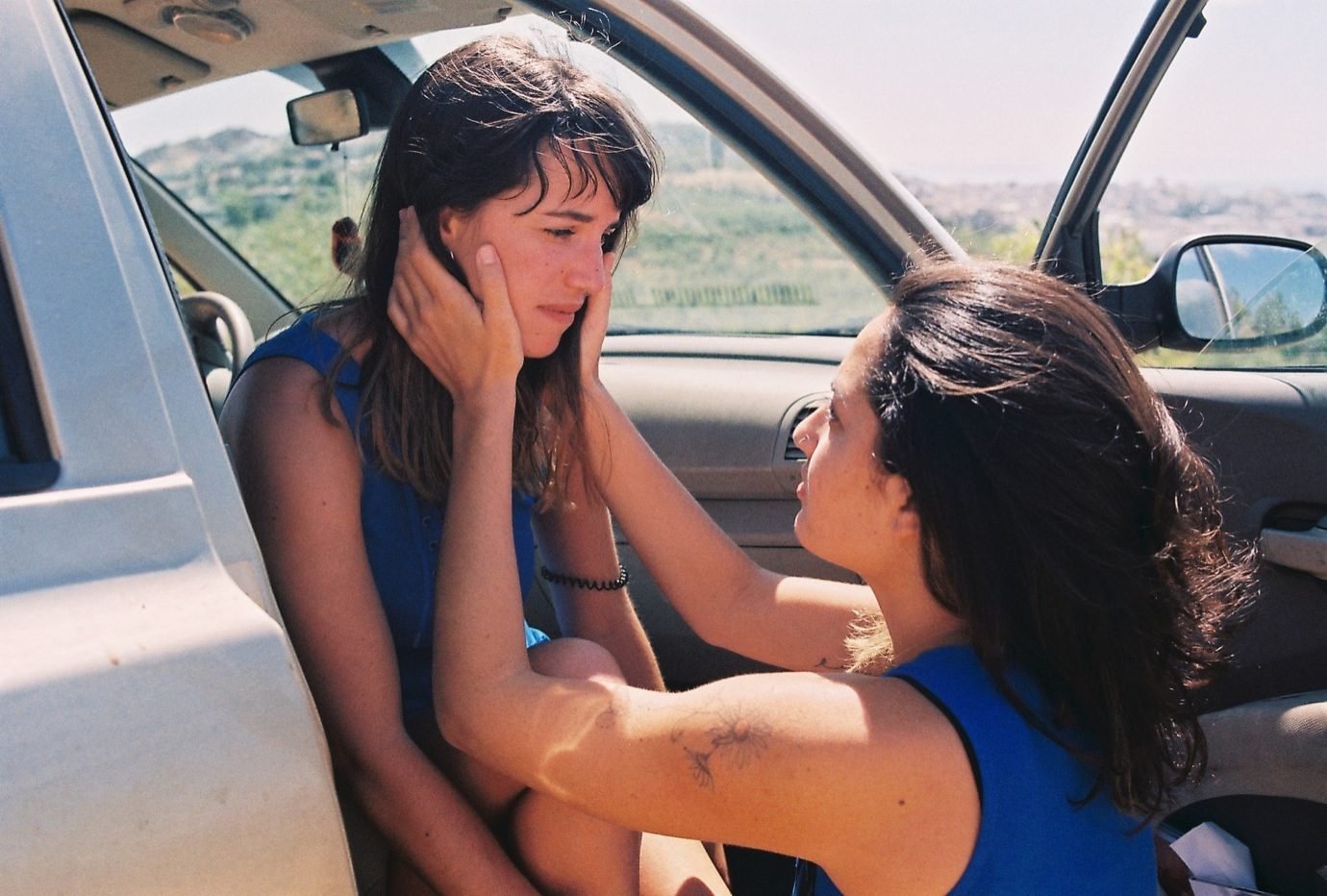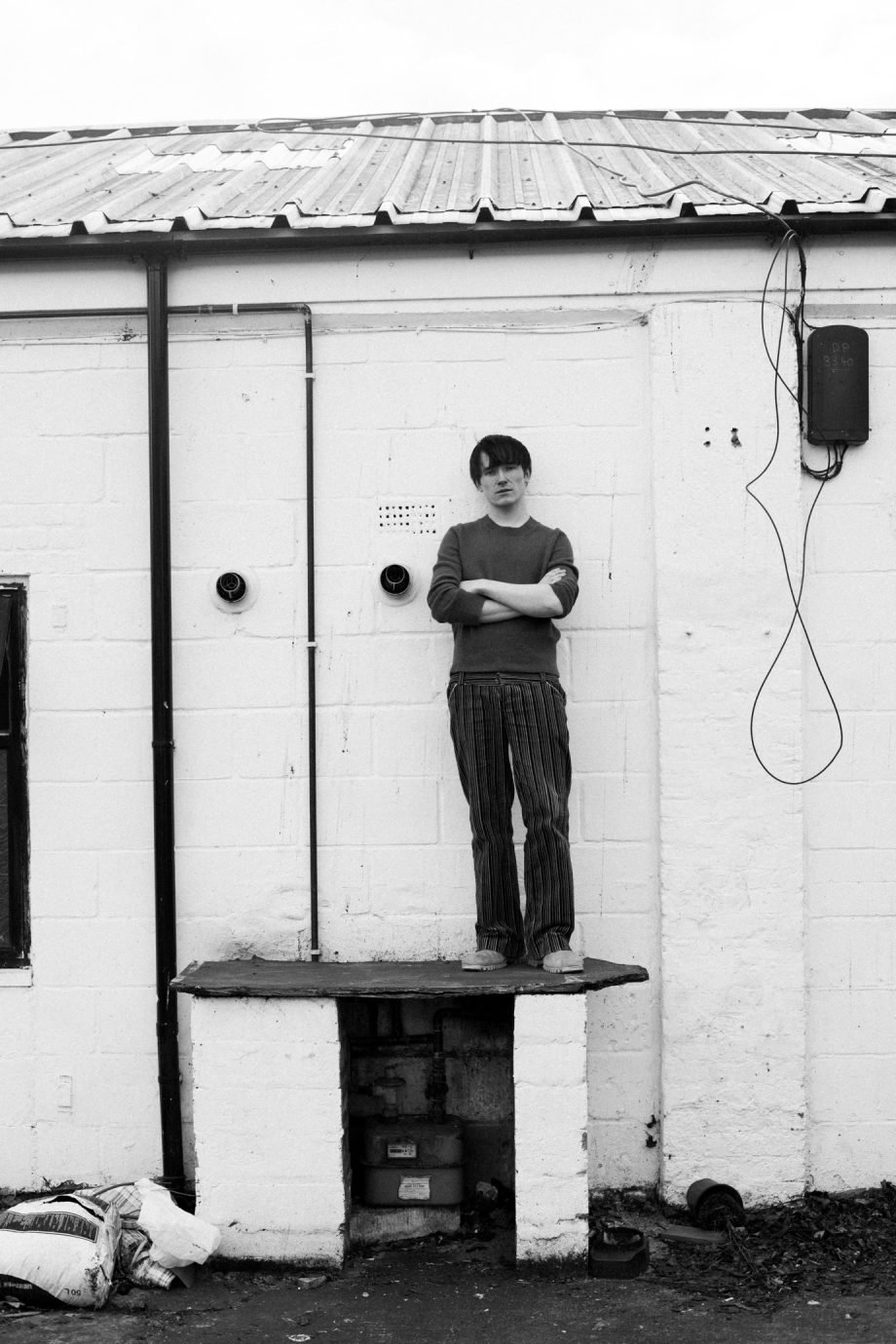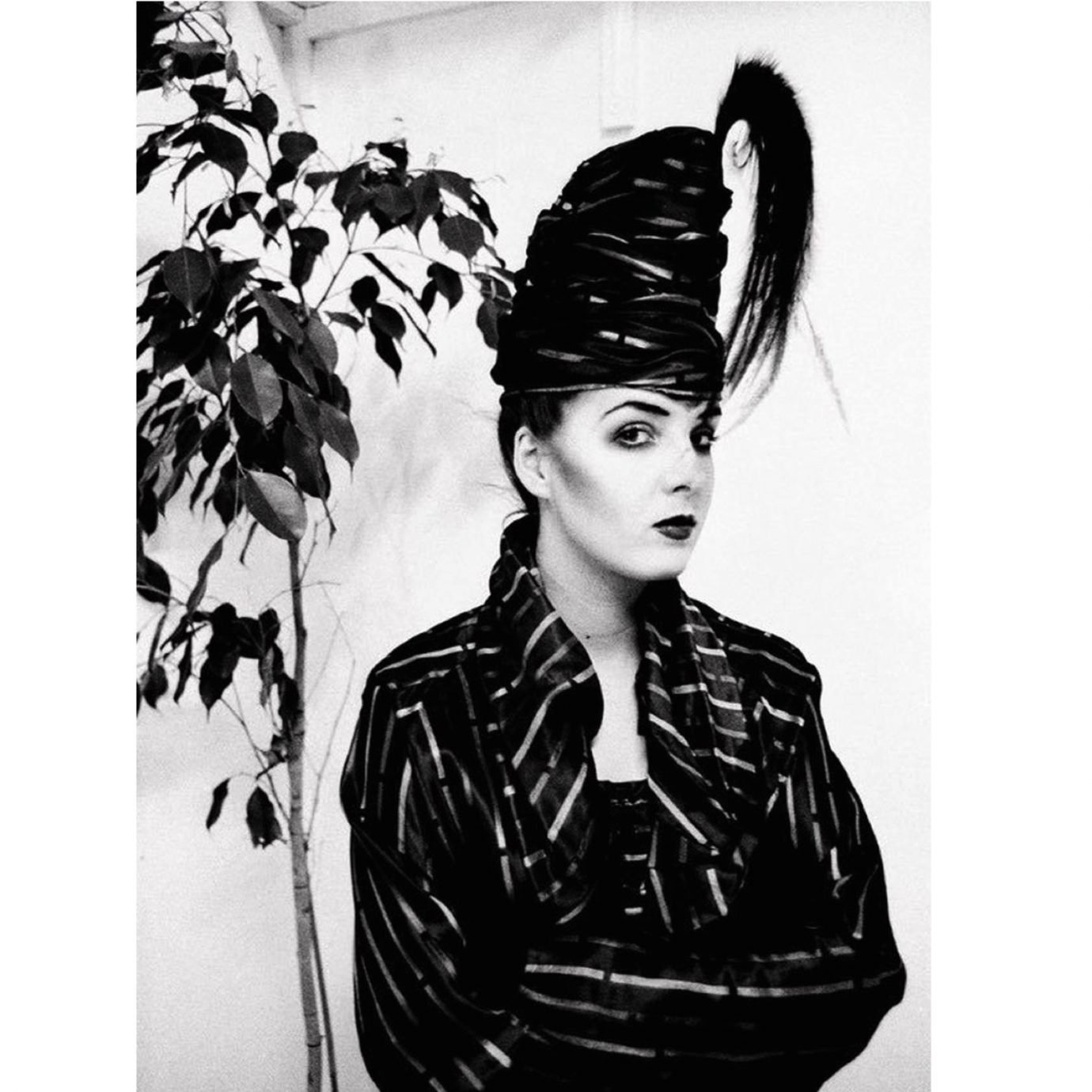“I FEEL THAT THE ACT OF A WOMAN DRESSING A MAN CREATES A SHIFT OF POWER FROM ONE TO THE OTHER AND IT FEEDS CLOTHES WITH EROTICISM, WHICH I FIND VERY INTERESTING.”
The Royal 20: Laetitia Berthier
Laetitia Berthier is profoundly fascinated by the definition of humanity with all its contradictions and transformations. This influence on her final collection is evident when it comes to translating conceptual and philosophic thinking into material clothing, without losing either discourses. All these mixed and merged forms, fabrics and colours challenged Laetitia to create highly complicated yet relatable products. Although she adopts an innovative and unique combination of materials, the production of each garment is both artisanal and traditional, focusing on the practical and emotional function of design.
Do you consider your work an extension of your own identity?
I have always considered my work as a unique space to question, challenge, amend and interplay realities. It is not necessarily an extension of myself, but rather a catalyst of my own and others’ paradoxical identities.
As a woman I find it exciting to design for the opposite gender, as it forces me to understand the role of clothing for men and challenges me to incorporate new references and influences into their wardrobe. I feel that the act of a woman dressing a man creates a shift of power from one to the other and it feeds clothes with eroticism, which I find very interesting.
My research initially started with analysing values and symbols of ‘power’ within menswear across decades. Very quickly I observed how radically they changed from one period to another: from royalty dress of the 1700s to the “Great Masculine Renunciation’ and the modern black suit of the 1800s, to contemporary innovative sportswear and technical wear.
The evolution of colours, materials and cut exposes drastic alterations in the perception and representation of masculinity.
The approach to design at the RCA encourages students to create their own research. How did you do this, and how has it affected the way you interpret a concept?
What was really great at the RCA is that they first asked you to be brutally honest about who you are, what you think, who you respect and what you despise. This process forced me to strengthen my opinions as well as build new ones on alternative models and cultures. It opens you up to the world, past your personal experiences and background. It brought my work into perspective and enforced my curiosity and attraction towards others, which really helped me refine both the concept and the collection to its core essence. To me, concept needs to be in conversation with reality as well as the society we live in. Rapidly, it became key to make sure that what I had to say was relevant to today’s society and justified the development of new designs.
Can you speak about the significance of experimentation and development?
Experimentation was a key part of the process, as it pushed me to go beyond my inhibitions and stereotypes. It started to free me from preconceived notion of things. It modifies your perceptions of the world around you, leading you to create something you weren’t initially expecting. After selecting ideas to develop further, they evolve from the intimate initiative to public exposure. This step really challenged my technical abilities, as I then had to create finished and desirable products that stated a clear message, enabling others to connect with it.
For my final collection, I was very lucky to collaborate with a great friend, Anna Duthie, also a 2016 RCA graduate from MA Textile Print. Together we hand-dyed all the nylons and crinolines of the collection in order to bring homogeneity to the collection. We developed all the prints and printed them together on various materials such as velvet, nylon, wool, crinoline and webbing. It was particularly exciting to learn from her the processes of dyeing and screen-printing. Challenging both our habits and intuitions towards design and print, we really listened to each other’s opinion to create the final prints. This great experience comforted me in the idea of working alongside multiple creatives in the future, with eclectic identities and paradoxical aesthetics. It really changed my opinion on the ‘ownership’ of a designer towards his or her work.
“CONCEPT NEEDS TO BE IN CONVERSATION WITH REALITY AS WELL AS THE SOCIETY WE LIVE IN.”
Prior to studying at the RCA did you gain industry experience?
During my Bachelors in Fashion design, I did a few internships with young designers in London, such as Marques Almeida, Raffaele Ascione and Aitor Throup. They were all beneficial as I was working within small teams, directly in contact with the designers. Very quickly I was able to build a strong relationship with the whole team and was very hands-on in all the steps of production and commercialisation. They taught me the steps of building a brand as well as the challenges throughout. This showed me that it is possible to successfully adapt the market to a new system that functions differently from the norm. Working on products that are highly conceptual but also commercial and viable in today’s society influenced me in how I perceive my own work now. In fact, I don’t think conceptual design and commercial design are antithetic. A product can encapsulate conceptual thinking that is communicated on different layers of understanding as well as fulfil its practical and commercial requirements to be viable in society.
Further thinking about marketing your work, do you aspire to launch your own brand or work for someone else?
I have always wanted to launch my own brand one day, but probably more within a collective as I don’t think it is reasonable for me to do it alone. Also working in collaboration with others will allow me to have my own creation and identity as well as developing a common concept with other creatives.
I am aware that the system is shifting. I really want to take time to understand the industry from the inside and develop a strong plan of action for the brand and the collective. I see it as a niche and alternative system to very local brands and globalised businesses. Based across Europe, it would be interesting to see how we can build an organisation that functions on a very local scale but is implanted in various cities at the same time and strengthens a common culture.
Presently, I am very happy to have officially graduated and I am very excited to look for a junior designer position in menswear houses across Europe. I am looking forward to working within a team that challenges me and expects me to bring something different to the brand. As my references are very varied, I am curious to see where I will carry on learning and discovering new angles on imagining, making, and empowering clothing.
“WHAT IS IMPORTANT TO ME IS NOT TRYING DESPERATELY TO CREATE SOMETHING ‘NEW’ BUT TO CONVINCE, BY CONTAGION, MEN TO WEAR CLOTHES THAT CONNECT WITH THEIR CULTURE AND ETHICS THAT THEY DON’T NECESSARILY FULLY UNDERSTAND OR CONTROL.”
When developing and transforming your collection, how important was working with different creative forms and materials as opposed to what we may think of as traditional garments?
The most important thing for me was to combine paradoxical references together into viable hybrid garments. To do so, I really enjoyed encapsulating fragments of historical, modern and contemporary menswear into one garment by not only looking at the cut but also subverting colours, materials, and techniques of production. For instance, one of the jackets was made of printed velvet, fleece lining, webbing and seat belts. This piece could be part of multiple eras – some people would see a flight jacket, others Japanese bondage or Queen Margot’s costumes in Patrice Chéreau’s movie from 1994. What is important to me is not trying desperately to create something ‘new’ but to convince, by contagion, men to wear clothes that connect with their culture and ethics that they don’t necessarily fully understand or control.
In what way would you like the fashion industry to change? How important is it to challenge people’s perceptions of the industry?
I believe diversity and democratisation of fashion is key, especially in such a globalised world, for everyone to have access and connect to it. However, I don’t think we need as much production of goods, as the market is oversaturated. The offer is disproportionate to a smaller demand. Often really great ideas and products are underestimated, consumed and withdrawn too quickly. To some extent, I think it is important to reconsider the idea of envy and desire towards clothing. Not necessarily creating elitism via an economic segregation, but maybe restricting access to it for a specific occasion or specific location. Every single piece of clothing holds mysteries and secrets that are part of its value.

